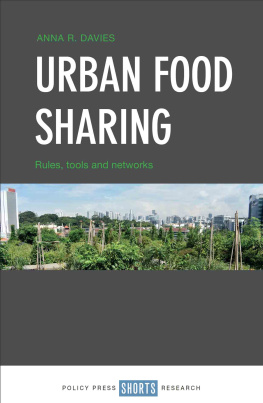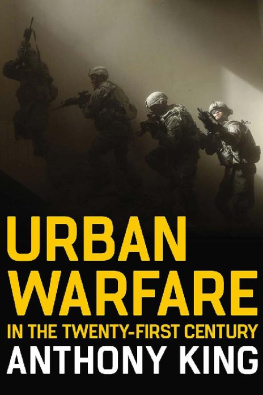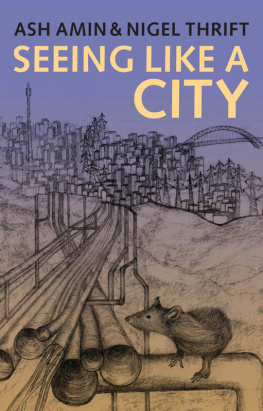The Connected City
This unique and innovative text provides advanced undergraduate and beginning graduate students with a clear introduction to the rapidly growing area of urban networks. It stands apart from other books by (1) providing a primer on network methodological issues that makes the substantive material accessible to newcomers; (2) including a range of interesting substantive urban issues including immigrant assimilation through networks, networks of urban infrastructure, and the emerging contours of a world city network, thereby appealing to a wide audience of students; (3) is organized around distinct levels of analysis in urban network inquiry (i.e., micro/individual, meso/institutional, and macro/global) to help students conduct their own research projects.
Zachary P. Neal is an Assistant Professor of Sociology and Global Urban Studies at Michigan State University, and serves as Associate Editor of Global Networks and on the Editorial Board of City and Community. His research on cities and networks has appeared in Urban Studies, Global Networks, City and Community, the Journal of Urban Affairs, and Geographical Analysis. He is also the co-editor of Common Ground? Readings and Reflections on Public Space.
The Metropolis and Modern Life
A Routledge Series
Edited by Anthony Orum, Loyola University of Chicago
Zachary P. Neal, Michigan State University
This series brings original perspectives on key topics in urban research to todays students in a series of short accessible texts, guided readers, and practical handbooks. Each volume examines how long-standing urban phenomena continue to be relevant in an increasingly urban and global world, and in doing so, connects the best new scholarship with the wider concerns of students seeking to understand life in the twenty-first century metropolis.
Books in the Series
Common Ground? Readings and Reflections on Public Space
edited by Anthony Orum and Zachary Neal
The Gentrification Debates edited by Japonica Brown-Saracino
The Power of Urban Ethnic Places by Jan Lin
Urban Tourism and Urban Change by Costas Spirou
The Connected City by Zachary Neal
The Worlds Major Cities edited by A. J. Jacobs
Exploring the City edited by Richard Ocejo
Also of Interest from Routledge
The Community Development Reader, Second Edition
edited by James DeFillipis and Susan Saegert
Housing Policy in the United States, Second Edition by Alex F. Schwartz
Neobohemia: China and Globalization, Third Edition by Doug Guthrie
Foodies: Democracy and Distinction in the Gourmet Foodscape
by Jose Johnston and Shyon Baumann
Branding New York: How a City in Crisis Was Sold to the World
by Miriam Greenberg
City Life from Jakarta to Dakar by AbdouMaliq Simone
The Connected City
How Networks are Shaping the Modern Metropolis
Zachary P. Neal
Michigan State University
First published 2013
by Routledge
711 Third Avenue, New York, NY 10017
Simultaneously published in the UK
by Routledge
2 Park Square, Milton Park, Abingdon, Oxon OX14 4RN
Routledge is an imprint of the Taylor & Francis Group, an informa business
2013 Taylor & Francis
The right of Zachary P. Neal to be identified as author of this work has been asserted by him in accordance with sections 77 and 78 of the Copyright, Designs and Patents Act 1988.
All rights reserved. No part of this book may be reprinted or reproduced or utilised in any form or by any electronic, mechanical, or other means, now known or hereafter invented, including photocopying and recording, or in any information storage or retrieval system, without permission in writing from the publishers.
Trademark notice: Product or corporate names may be trademarks or registered trademarks, and are used only for identification and explanation without intent to infringe.
Library of Congress Cataloging in Publication Data
Neal, Zachary P.
The connected city: how networks are shaping the modern metropolis/
Zachary P. Neal.1st ed.
p. cm.(Metropolis and modern life)
1. Social networks. 2. Cities and townsSocial aspects. 3. Technological innovationsSocial aspects. 4. Social groups. I. Title.
HM741.N43 2012
303.483dc23
2012007170
ISBN: 9780415881418 (hbk)
ISBN: 9780415881425 (pbk)
ISBN: 9780203101728 (ebk)
Typeset in Caslon
by Florence Production Ltd, Stoodleigh, Devon
CONTENTS
The Connected City by Zachary P. Neal joins the other fresh and original monographs that we have published in this series on cities. It shows in particular how social network analysis can furnish both a theory and a method for the study of cities. In a grand synthesis of many literatures on social networks, it reveals how networks operate within cities, as between residents, but also between and among cities, as important connections of people and economic trade. Social networks, as the highly popular social media such as Facebook and Linked-In reveal, represent an emerging tool for organizing and working in the world today. This book not only provides essential ideas for thinking about cities, but it also furnishes some of the essential intellectual apparatus that people will need to navigate their way through this world in the future. Its breadth will make it appeal to people in many different academic disciplines, from geography to political science. And its accessibility in terms of its writing and imagery will make it an important, even indispensable means for teaching students that range from beginning undergraduates to advanced graduates.
Anthony Orum
Co-Editor
This is, first and foremost, a book about cities. But, why write about cities? Because at least since the industrial revolution, people have been moving to cities in search of both opportunity and stimulation. The shift of the worlds population into citiesurbanizationis clear from a few simple statistics. In 1800, only 3 percent of the worlds population lived in cities, but by 1900 this number had increased to 14 percent, and passed 50 percent in 2008. This number is expected to continue climbing, to 70 percent by 2050. The rapid urbanization of the population has been even more dramatic and complete within the United States, where 6 percent lived in cities in 1800, nearly 40 percent in 1900, and now over 80 percent. Clearly, then, cities are worth studying because they are where the majority of people are today.
But, cities are not just dense clusters of people. They are also dense clusters of all sorts of human activity including research, commerce, tourism, and culture. Indeed, even in the past, when the majority of people lived in the rural countryside, cities were still vibrant centers of activity. Major cities of the classical age such as Athens and Rome served as centers for religion and government, where pilgrims and concerned citizens traveled to worship and be heard. During the medieval period, cities and towns served as bustling marketplaces where local farmers and worldly merchants came together to offer their products for sale. Later, large institutions such as universities but also small ones such as coffee houses sprung up in cities during the age of enlightenment, which helped bring together like-minded individuals seeking to break with rural superstition in the pursuit of science. Even today, those living in small towns frequently visit cities to take part in their recreational amenities, for example, museums and parks, and to patronize their diverse commercial establishments such as unique shops and ethnic restaurants. So, cities are not just where the people are today; cities are where the majority of human activity has always been.









